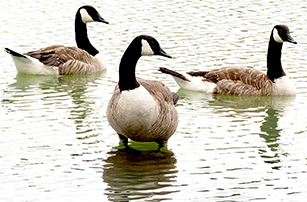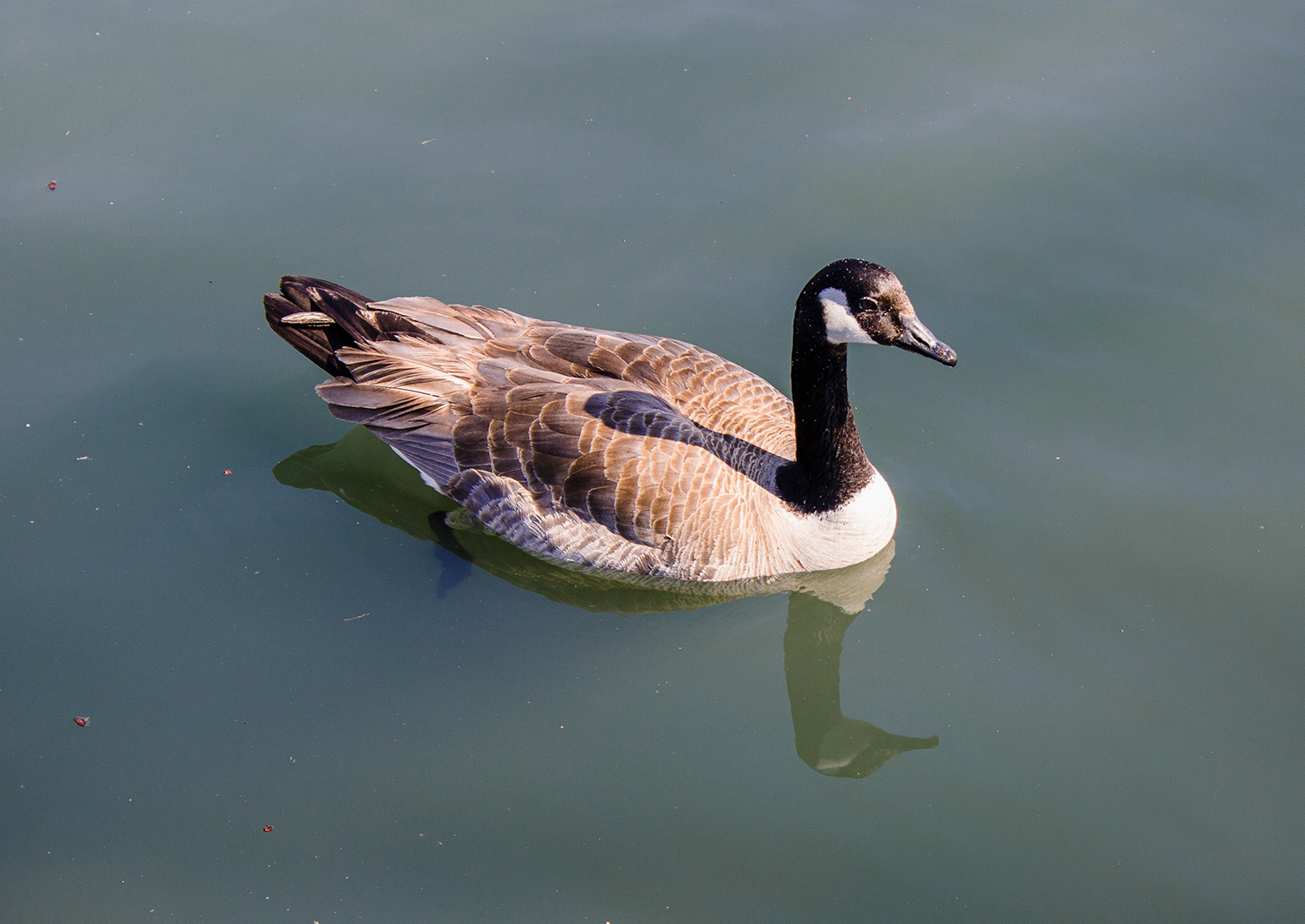| Objective |
| Provide advice and information on Canada geese. |
Canada geese were introduced as a game bird to New Zealand in the early 1900s. They had the status of a game bird under the Wildlife Act 1953 and were managed by Fish & Game NZ. This status was removed in 2011. While largely herbivorous, Canada geese eat a wide range of grasses and grains but may also consume small fish and insects. They are adept at living in human-altered environments.

What does it look like?
Canada geese are large, light brown birds with a black neck and head and distinctive ‘chin strap’ of white feathers.
- Body length ranges between 75cm and 110cm.
- Wingspan ranges between 127cm and 183cm.
- Black head, neck, bill, legs and feet.
- Face has distinctive white patch, sometimes referred to as a ‘chin strap’.
- Brown and grey plumage.
- Males weigh up to 6.5kg and females 5.5kg.
- An average nest contains five eggs.
Why is it a pest?
The Canada goose, native to arctic and temperate areas of North America, was introduced to New Zealand in 1905 and 1920 but did not become established in the North Island until it was re-released in the 1970s. The introductions were from uncertain sources, and probably of mixed stock, but comparisons with North American birds indicate the New Zealand stock is mainly the Branta canadensis maxima species.
These geese are widely distributed throughout the Waikato, with flocks reported most frequently on coastal farms from Kawhia Harbour to Port Waikato and wetland areas in the Waikato and Hauraki districts. They have also been reported by landowners at some sites on the Coromandel Peninsula.
In the water, these geese feed from bottom sediments and also directly on aquatic plants. However, defecation from large numbers of Canada goose is the greater threat to aquatic values. When these geese concentrate at specific sites, their droppings introduce bacteria and nutrients into waterways. The Canada goose also competes with other waterfowl for wetland resources.
Their impact on farm production is largely unquantified, but it is known that five geese may consume the same amount of grass as one sheep and that they impact on production by fouling paddocks.
Control methods
Control of Canada geese can be achieved by shooting as part of an organised control programme. However, shooting is not always possible in urban, lifestyle and semi-rural areas.
Our animal pest staff are available to provide advice and information on controlling Canada geese on freephone 0800 800 401.







To ask for help or report a problem, contact us
Tell us how we can improve the information on this page. (optional)